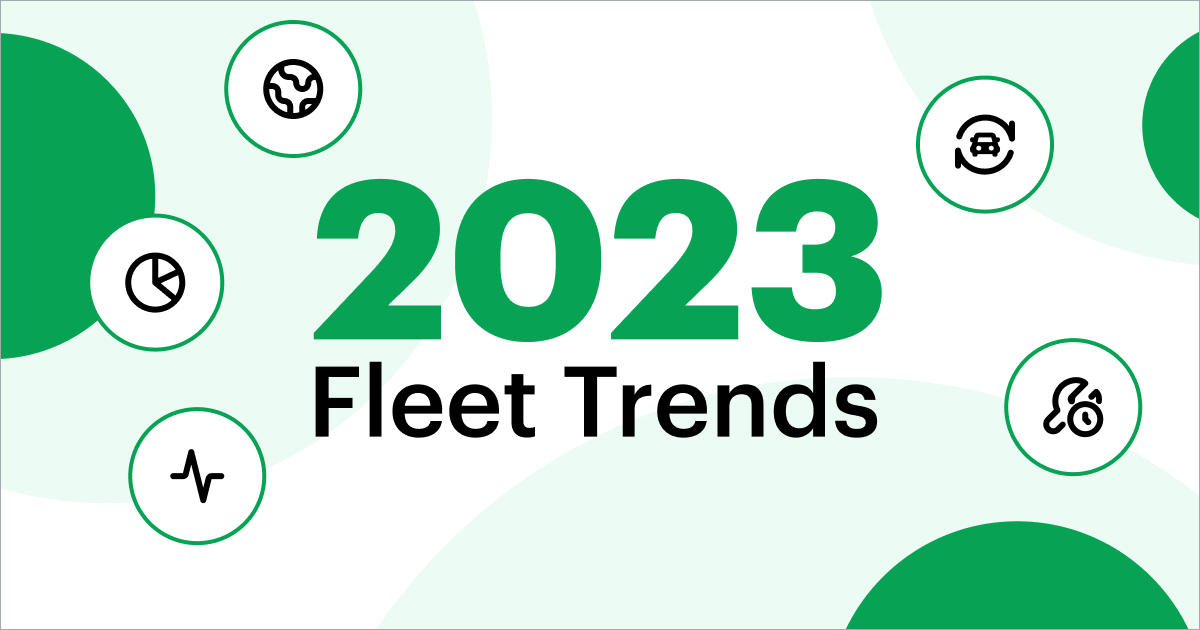
Are autonomous vehicles (AVs) safe? Who or what is at fault in the event of an accident with an AV? How will AVs affect the fleet industry—especially jobs? These are all questions you may consider—or if you haven’t—you will be considering in the not-too-distant future.
It’s no secret that the forthcoming autonomous driving revolution is a hot topic. There are many ongoing discussions surrounding the concerns and pressing unknowns of this new era of advanced driving technology. While these conversations are important and necessary, let’s not overlook the truly impressive benefits of this rapidly emerging technology.
In this blog post, we’ll work to answer the question we’re all asking…how can AVs bring positive developments to the fleet industry?
1. Increased safety
Automated reactions, fewer accidents. According to the National Highway Traffic Safety Administration (NHTSA), 94 percent of accidents are related to human error. Automated vehicles can remove human error and prevent a huge majority of accidents.
To put this metric into perspective, on average, 222 trucks are involved in an accident every 100 million vehicle miles. With automated driving, the truck accident rate could fall to eight crashes per 100 million miles by 2040. Liability coverage could also drop by 10 percent.
With AVs, humans’ slower reaction time, distracted driving, etc. can be eliminated from the equation, drastically reducing accidents and increasing safety.
2. Greater efficiency
Reduced congestion
Automated driving leads to fewer accidents. With fewer traffic incidents comes fewer reasons to slow traffic. This translates to fewer instances of police cars and wrecked vehicles on the side of the road, blocked lanes, and so on. As a result, road congestion is reduced by about 25 percent. No more rubbernecking!
Truck platooning can also reduce highway congestion. In case you aren’t familiar with the term, platooning is when autonomous trucks and cars are grouped together using electrical coupling, enabling simultaneous braking and acceleration. This avoids the “accordion” effect of vehicles speeding up or slowing down at unpredictable times. Because high-tech sensors can react 90 percent faster than humans, platooning allows the distance between trucks to fall from 50 meters to 15 meters.
Increased lane capacity
With the ability to operate at higher speeds and reduced space between vehicles, platooning can also lead to 500 percent greater lane capacity, vehicles per lane per hour.
Lane capacity can also increase with the adoption of adaptive cruise control. Adaptive cruise control automatically adjusts vehicle speed to maintain a safe distance between cars and trucks ahead. This allows drivers to stay on cruise control for miles and avoid having to speed up or slow down depending on traffic. When a majority of vehicles adopt this technology, lane capacity can increase by 80 percent.
Real-time route optimization
Follow the best routes according to real-time information. Autonomous vehicles may be able to read the condition of the roads in real-time and redirect the routes accordingly.
Vehicle-to-vehicle (V2V) and vehicle-to-infrastructure (V2I) are developing technologies that enable vehicles to exchange safety and mobility information with one another and surrounding infrastructure. Vehicles can receive information like road conditions while en-route and shift accordingly or autonomously coordinate behavior with other vehicles and infrastructure like at intersections.
Using V2V and V2I to determine optimal routes can reduce the number of miles driven, saving time and fuel use.
3. Less energy consumption
Greater efficiencies lead to more energy savings for your fleet. Fuel consumption of commercial light trucks, buses and heavy-duty freight trucks is expected to reduce up to 18 percent by 2050.
As the risk of accidents decreases, so does the necessary weight of vehicles. Vehicles could become 25 percent lighter by 2030 while maintaining their size. This could save up to 7 percent in fuel consumption.
In addition, eco-driving technology, which automates and optimizes driving like cruise control and smooth acceleration and deceleration, can improve fuel economy up to 10 percent.
Of course, despite the potential for the reduction in energy consumption, there’s also the possibility it could increase. This could occur due to reduced travel cost, faster highway speeds, longer commutes and increased accessibility of driving like to the elderly or disabled. According to an NREL study, depending on how these factors play out, fuel consumption could decrease by 80 percent or increase up to 200 percent by 2050.
Although it is difficult to predict the effect of automation on fuel consumption overall, automation is expected to increase fuel savings for trucks.
4. More productivity
The power of multi-tasking. There are varying levels of automated vehicles, but more advanced levels only require the driver to monitor the drive to make sure it goes smoothly. As a result, drivers in autonomous vehicles may not have to give their full, constant attention to driving vehicles and can shift their focus to other fleet related tasks like paperwork. Your fleet accomplishes more in a shorter period of time.
In addition, your fleet vehicles may be able to travel for longer time periods now that a driver isn’t controlling the vehicle and subject to drowsiness. Although there are yet to be policies or regulations surrounding this issue, it’s possible there will be extended allowable driving time for each driver.



